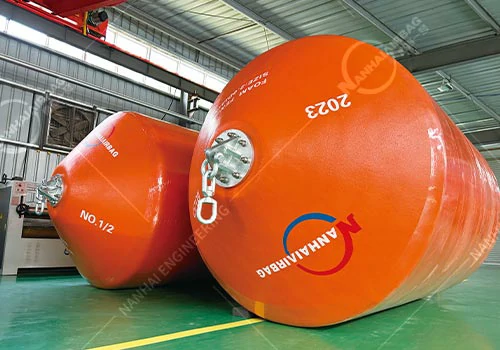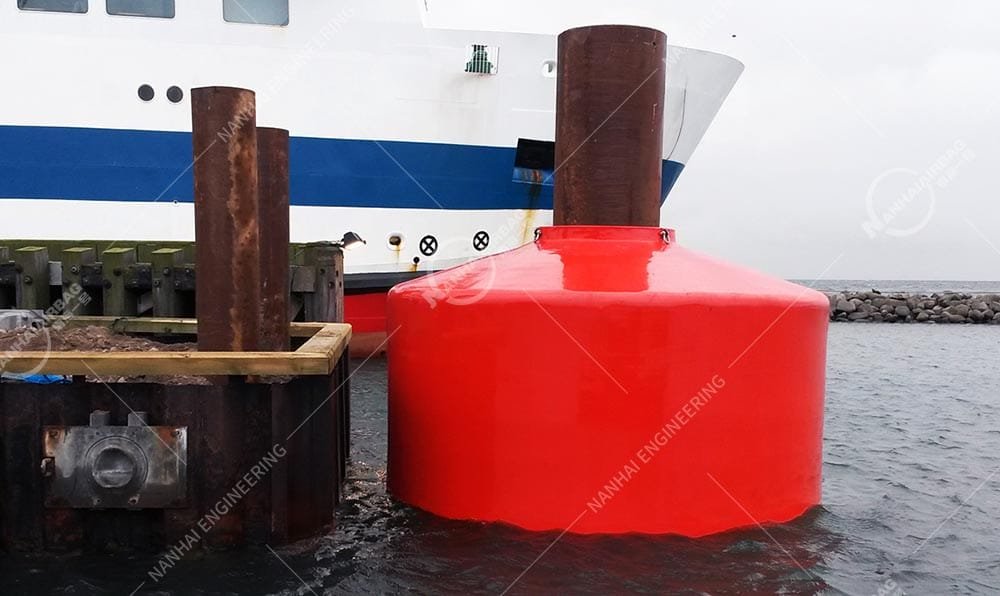Choosing the Right Berthing & Mooring Setup for Every Ship Type
09/29/2025The Role of Marine Rubber Fenders in International Maritime Safety
10/01/2025The difference between donut fenders and foam fenders
If you are looking for the right fender for your port or vessel, you may have come across two popular options: donut fenders and foam fenders. At first glance, they may look similar because both are designed to protect ships and port structures. But in fact, they are quite different in how they work and where they are used.
This guide will explain the differences in a simple way so you can choose the right fender for your project.
Foam Fenders: Strong Protection for Heavy Operations
What they are: Foam fenders are made with a strong outer layer of rubber and filled with high-density closed-cell foam. They do not sink, they do not absorb water, and they return to their shape after compression.
Why choose foam fenders:
- They absorb a lot of energy, which reduces the impact force on the ship and the dock.
- They provide a wide, soft contact surface, which makes them gentle on the hull.
- They are reliable for large ships, heavy cargo operations, and ship-to-ship (STS) transfers.
Typical use:
- Oil terminals, busy cargo ports, and STS operations where large vessels need extra protection.

Donut Fenders: Space-Saving and Great for Narrow Areas
What they are: Donut fenders are shaped like a ring, similar to a donut. Donut fenders can be installed around piles or fixed points and often come in bright colors such as yellow or orange.
Why choose donut fenders:
- They save space and work well in narrow channels or port entrances.
- They can guide ships into position and also act as a visual signal.
- They are simple to install and maintain.
Typical use:
- Narrow waterways, port entrances, bridge structures, and places where guidance and visibility are as important as protection.

Quick Comparison
- Energy absorption: Foam fenders are stronger.
- Space use: Donut fenders take less space.
- Surface contact: Foam fenders give wide contact, donut fenders give smaller contact.
- Visibility: Donut fenders can be painted bright colors to guide ships.
- Best use: Foam fenders for docks and STS, donut fenders for narrow areas and entrance points.
Buying Tips
When choosing between donut fenders and foam fenders, ask yourself:
- What type of ships will use this dock or channel?
- Is the area narrow or wide?
- Do I need strong energy absorption or more of a guiding function?
- How important is visibility and signaling?
- What is my budget and how easy should maintenance be?
The right choice often depends on combining these factors. Some ports even use both types together: donut fenders as guides at the entrance and foam fenders as the main protection at the berth.
FAQ
Q: Which fender lasts longer, foam or donut?
A: Both can last many years if well maintained. Foam fenders are strong for heavy duty, while donut fenders are easier to replace or repaint.
Q: Can foam fenders be used in narrow waterways?
A: They can, but they usually take more space. In very narrow areas, donut fenders are more practical.
Q: Why are donut fenders painted in bright colors?
A: The colors help ships see them easily and use them as guides when entering a channel or dock.
Q: Are foam fenders more expensive?
A: Yes, usually foam fenders cost more, but they provide stronger protection for large ships.
Q: Can I use both types in one port?
A: Yes, many ports do this. For example, donut fenders at the entrance for guiding, and foam fenders at the berth for protection.
👉 In short: Choose foam fenders if you need strong protection for heavy docking or STS operations. Choose donut fenders if you need space-saving, guiding, and visual signaling in narrow areas.
